Diet plans and health programs are not created as “one-size-fits-all.” These diet plans have a diverse set of purposes to achieving specific goals. Even though some diets are popular, that doesn’t mean that everyone should try them.
One of the most popular reasons for getting into dieting is weight loss. Diet plans realign the accustomed eating habits that one has to go through, such as restrictive diets and cutting down on areas of nutrition that cause an increase in weight gain.
Some people, on the other hand, follow diet programs that help them gain weight and attain their recommended weight. People like bodybuilders, for instance, focus more on eating patterns, such as increasing their protein intake to gain more muscles and cutting down on body fat. Some of these are primarily intended for specific medical conditions, but have since been incorporated into mainstream diets.
Being prepared mentally and physically is vital to assessing if one is equipped to undergo such a diet. Some diets can be very drastic and physically and mentally exhausting, which can be harmful to one’s health in the long run.
A few of the best diet programs and best diet plans would include the Mediterranean Diet and Dash Diet. Atkins and the Ketogenic Diet would top the best weight loss plans list. A selection of the best diverse diets for different diet-related purposes, such as weight loss, are all listed below.
| Best Diet Name | Type of Diet | Level of Difficulty |
| Mediterranean Diet | Balanced Diet | Easy |
| DASH Diet | Balanced Diet | Easy |
| The Flexitarian Diet | Balanced Diet | Easy |
| Mayo Clinic Diet | Balanced Diet | Easy |
| TLC Diet | Low-fat Diet | Moderate |
| Volumetrics Diet | Balanced Diet | Easy |
| Nordic Diet | Balanced Diet | Moderate |
| Paleo Diet | Low-carb/High-Protein/Elimination Diet | Hard |
| Ketogenic Diet | Low-carb/Elimination Diet | Hard |
| Ornish Diet | Low-fat/Elimination Diet | Hard |
| Jenny Craig Diet | Balanced Diet | Easy |
| Asian Diet | Balanced Diet | Moderate |
| Fertility Diet | Low-carb Diet | Easy |
| Noom | Low-calorie/Balanced Diet | Easy |
| Nutritarian Diet | Balanced/Elimination Diet | Hard |
| South Beach Diet | Low-carb/Elimination Diet | Moderate |
| Macrobiotic Diet | Low-fat/Elimination Diet | Hard |
| Alkaline Diet | Balanced/Elimination Diet | Hard |
| Raw Food Diet | Low-calorie/Elimination Diet | Hard |
| Atkins Diet | Low-carb/Elimination Diet | Hard |
1. Mediterranean Diet
The Mediterranean Diet is a balanced diet that follows specific meal plans, in line with the food that is customary in the Mediterranean region. People in these regions are notably healthy and lower the incidence of heart-related diseases induced by unhealthy eating habits.
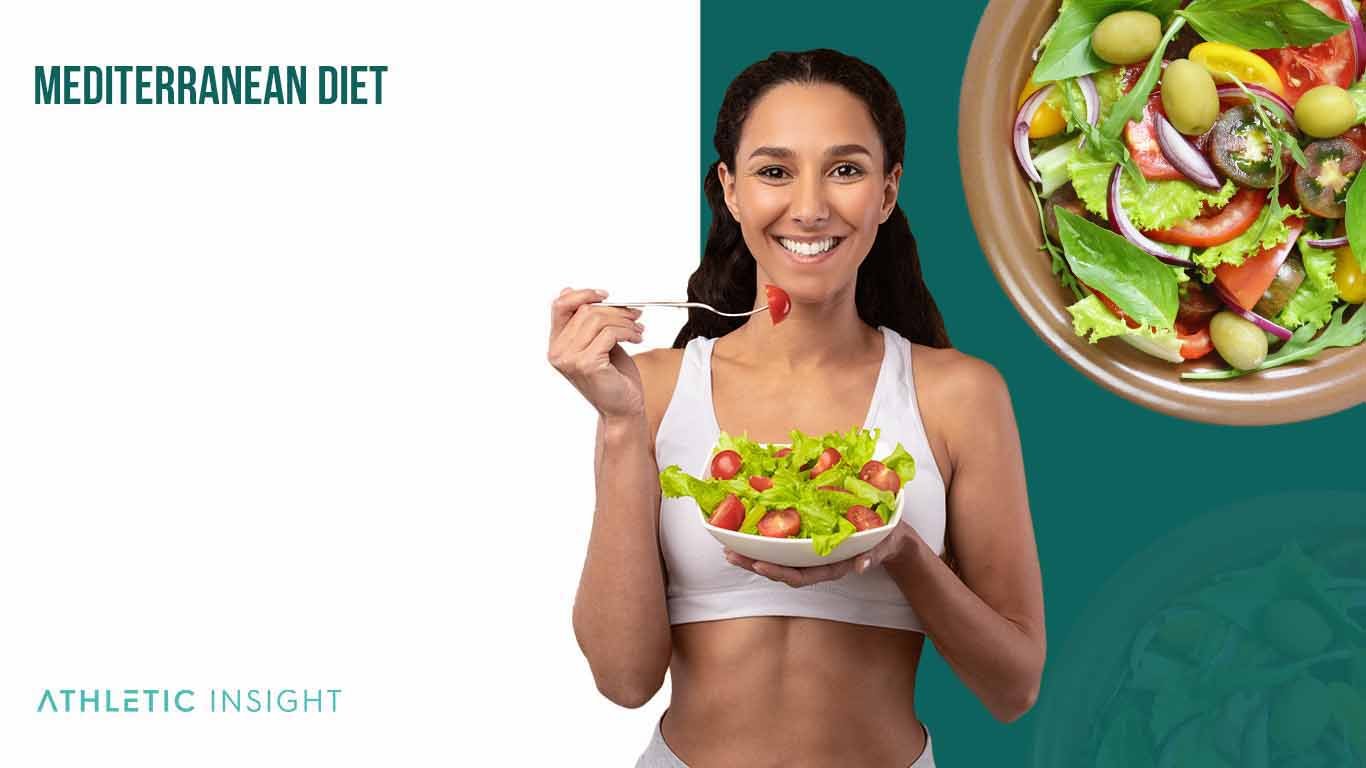
Several studies on the Mediterranean Diet, such as one by Estruch, concluded that the diet lowers heart diseases by 31% from its tested sample population. Experts say this diet follows a healthy eating pattern that includes whole grains, fruits and vegetables, nuts, herbs, and olive oil as a primary fat source.
People in the Mediterranean still eat animal meat in smaller amounts and in moderation. The Mediterranean diet prefers healthier animal fat sources, such as those in fish that are rich in omega-3 fatty acids and polyunsaturated fats. When it comes to cooking, the diet requires olive oil rather than animal fat and dairy products such as butter and lard.
2. DASH Diet
DASH is an acronym for Dietary Approaches to Stop Hypertension which imposes a balanced diet. The DASH diet’s primary purpose is to lower blood pressure, which causes hypertension, and to create an overall healthier eating habit. It focuses on reducing sodium intake to 2,300 mg daily, which is a significant difference.
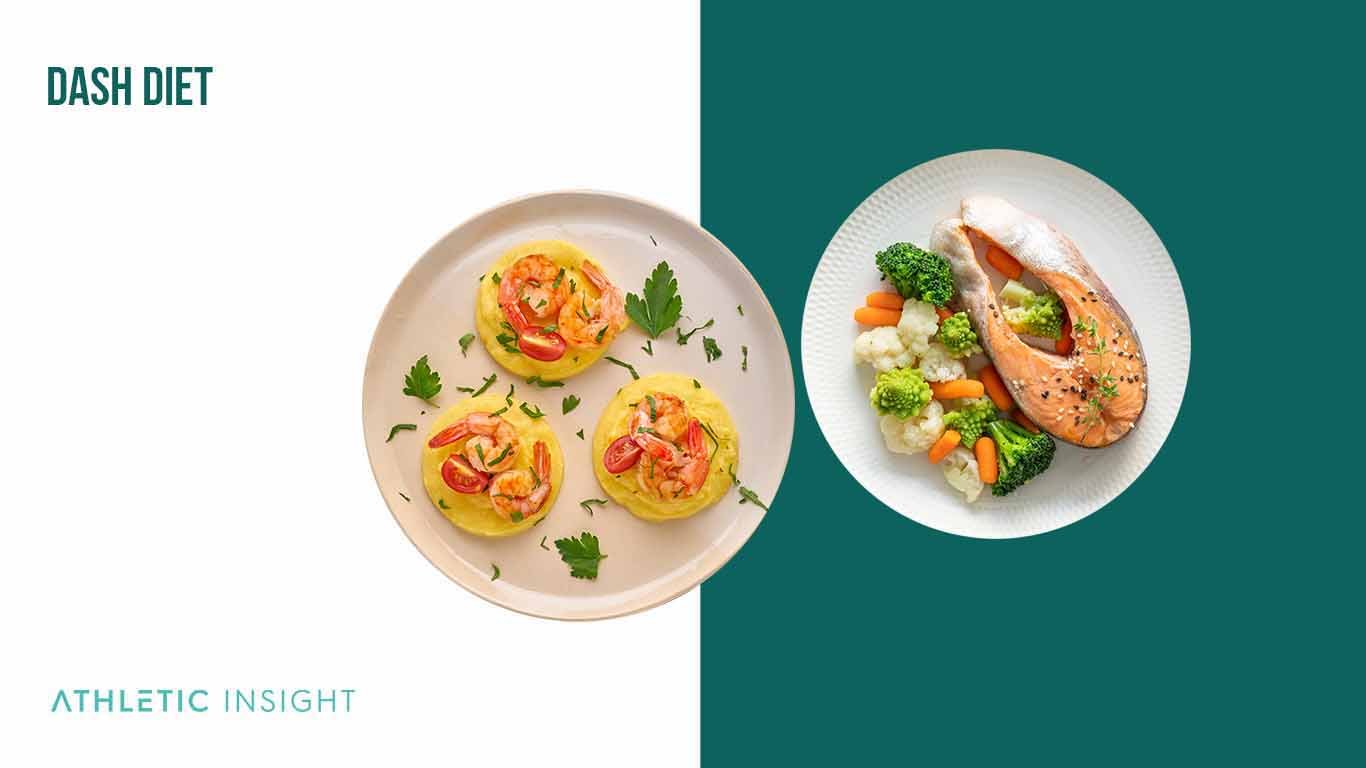
Following the DASH Diet should require calcium, potassium, magnesium, protein, and fiber meals. Fruits, vegetables, and whole grains are preferred over fatty foods and dairy products. People are still allowed to eat animal meat in moderation, and should be low in saturated fat. One could avoid high concentrations of sodium foods by opting for a salt-reduced home-cooked meal from processed foods.
Canned goods and frozen food mostly contain preservatives and a high salt content that can spike blood pressure. Regular amounts of the mentioned food group should still be taken in moderation and follow its 2,000 calories daily, as the DASH Diet recommends. Following these food groups in a DASH Diet improves the heart’s health and condition.
3. The Flexitarian Diet
The Flexitarian Diet is a balanced diet that comes from the words flexible and vegetarian. The diet is considered flexible as they follow a vegetarian diet but still eat animal protein and dairy products. Contrary to the other diet plans, the Flexitarian Diet has no calorie restrictions and requires macronutrient intake to achieve its daily goals.
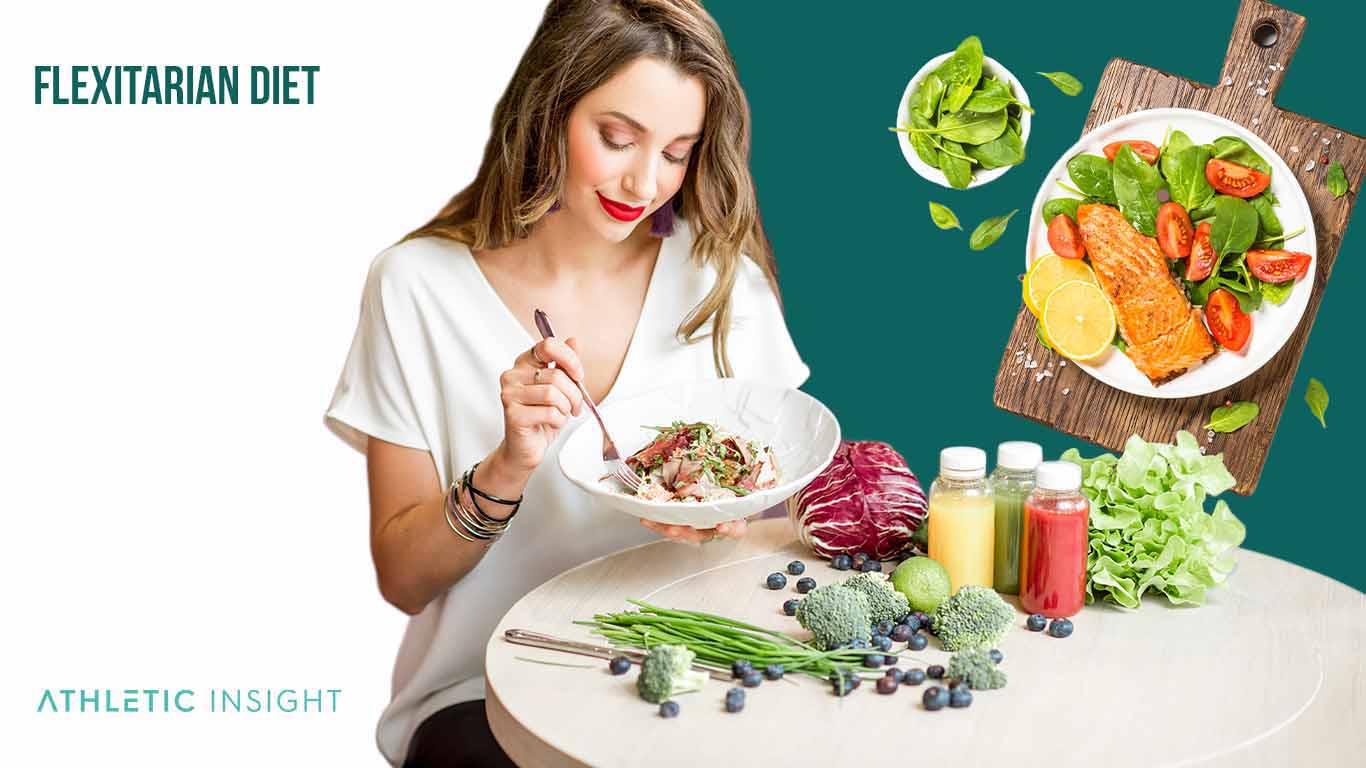
The well-roundedness of the diet makes it a more manageable and much more straightforward approach when it comes to diet. The Flexitarian Diet promotes eating more plant-based food than saturated unhealthy fat and high sodium content. It is recommended to minimize meat consumption to 28 ounces per week.
This diet would be a viable approach to reducing animal meat intake. The choice of meat is still taken into account, preferring those that are leaner, free-range, organic, or grass-fed animals. Following the Flexitarian diet is a more sustainable approach for beginners who want to reduce their weight and risk diet-induced health problems.
4. Mayo Clinic Diet
The Mayo Clinic Diet is a balanced diet that follows a weight loss program designed after the combined efforts and expertise of medical professionals at the Mayo Clinic. It is an overhaul of not just the food intake but also a person’s daily physical activities and routine that can affect weight gain and loss.
The good thing about the Mayo Clinic Diet is that it is accustomed to the different states and needs of the individual. It includes two phases, the Lose It! And Live it! Phase. The Lose It! stage of the program focuses on improving lifestyle habits through eliminating certain unhealthy habits and adding on good ones.

The Live it! Phase goes through teaching healthier eating habits, increasing daily physical activities, and the goal of retaining them. They have recommended 30 minutes of exercise per day and increased duration as the individual progresses with the program.
The Mayo Clinic has developed its Healthy Weight Pyramid, consisting of low-calorie but high in nutrition food. There are no restrictions on the number of calories eaten daily, but portioning meal plans are encouraged.
5. TLC Diet
The TLC is a low-fat diet that stands for therapeutic lifestyle changes, aiming to improve the overall state of health by modifying diet and lifestyle. The National Institutes of Health crafted this diet under its National Cholesterol Education Programs to help reduce the amount of cholesterol in daily food intake.
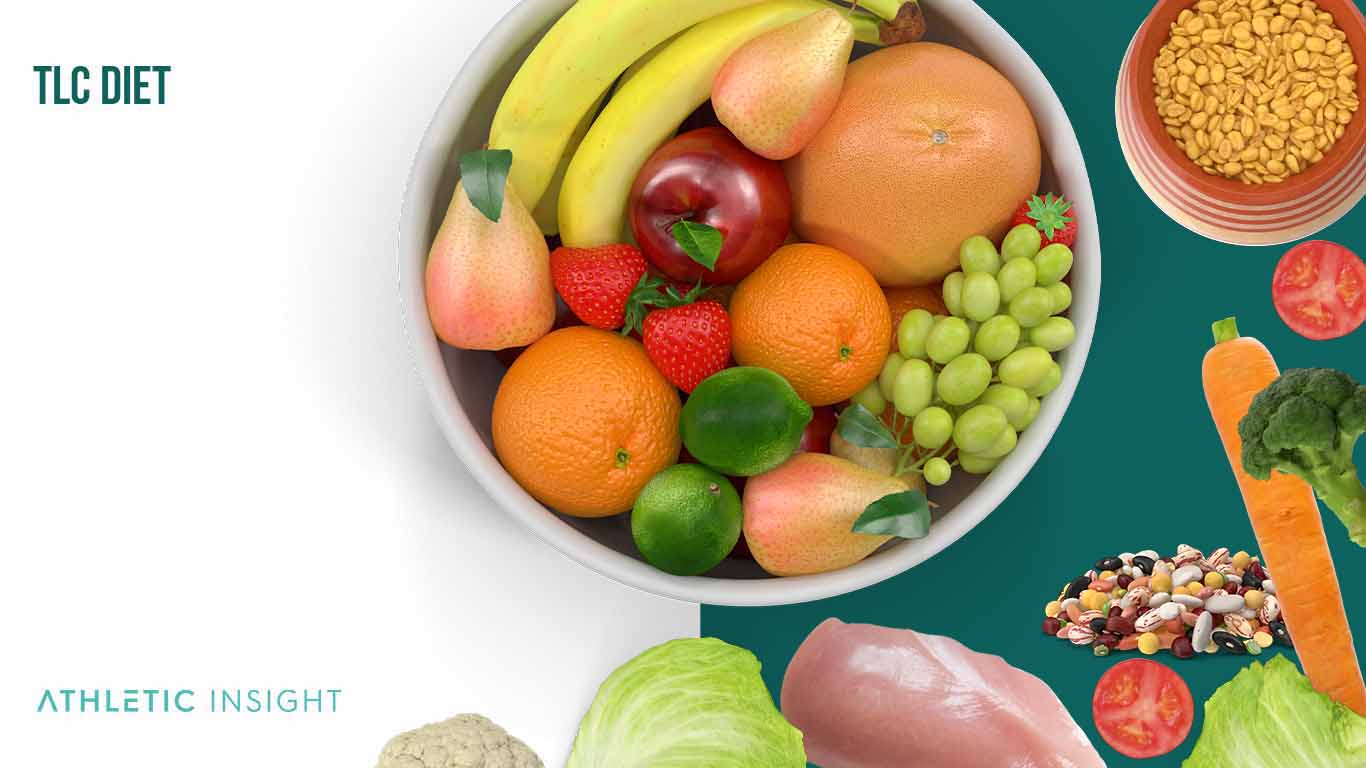
The TLC Diet is a diet that targets heart health and overall wellness. High concentrations of bad cholesterol in the diet could clog up the arteries, leading to stroke and heart diseases. The diet encourages people to eat meals that have more significant portions of vegetables, low-fat dairy, fruits, lean meats, portion-sized bread, and pasta. It precisely follows a certain amount of servings according to each food item.
A low-cholesterol and fat diet significantly improves the overall state of the heart and blood circulation. Other points that should be considered when undergoing a TLC Diet include a low sodium diet, increased fiber intake, and a limitation in alcohol consumption.
6. Volumetrics Diet
The Volumetrics Diet is a balanced diet founded by Barbara Rolls, a Penn State University nutrition expert. It employs a weight loss program not with the amount of food intake but the quality. The Volumetrics Diet focuses on low calories and food that is high in nutrition that benefits the body more.
Vegetables and fruits are commonly high in nutrients and water content that suppress the feeling of hunger throughout the day. It suppresses cravings for sugary foods that are dense in calories and packed in smaller quantities. One could reduce weight loss by suppressing these high-calorie food groups and increasing consumption of low-calorie meals.
The Volumetrics Diet does not entirely restrict calorie-dense food but is advised to partake in smaller portions. Apart from the given guidelines for the weight loss program, the diet should be paired with regular exercise between 30 and 60 minutes per day.
7. Nordic Diet
The Nordic Diet follows a balanced diet based on the food eaten by people in Nordic regions such as Denmark, Iceland, Sweden, Finland, Greenland, and Norway. This type of diet is reminiscent of the Mediterranean Diet, which mirrors the eating habits of a group of people showing healthier effects on them.
The two diets follow considerable similarities in the type of food eaten except for the kind of oil recommended for use. The Nordic Diet proposes using canola oil instead of extra virgin olive oil, as it claims the former has lower amounts of saturated fat. This diet encourages eating food high in protein, plant-based food sources, whole grains, complex carbohydrates, and healthy fat sources.
Other guidelines for a Nordic Diet follow reduced sugar consumption and highly processed food. The diet also calls for reducing alcohol consumption and high salt content foods. Underground, the Nordic Diet reduces the chances of cardiovascular and life-threatening diseases and helps reduce weight loss.
8. Paleo Diet
The Paleo Diet is a low-carb, high-protein, and elimination diet that observes the same eating style as in the Paleolithic era. The Paleo diet was created in response to how the modern diet has transitioned. The modern way of farming does not conform to what the body genetically needs.
The Paleo Diet aims to reduce weight gain and follow healthier eating habits. There are a few variations regarding the guidelines for the Paleo diet, but it follows a general guideline. The Paleo Diet consists of plant-based foods such as nuts, fruits, and vegetables. Meat is allowed in the diet but should be lean, and those that are grass-fed animals. One can source healthy fat through olive, nut, and fruit-sourced oils.
The Paleo Diet has restrictions such as salt, sugar, potatoes, dairy products, wheat, oat, barley, and legumes such as beans, peanuts, lentils, and peas. As it claims to follow the eating habits of the Paleolithic era, wherein processed food is avoided. Following a Paleo Diet could significantly help people struggling to lose and maintain weight.
9. Ketogenic Diet
The Ketogenic Diet is a low-carb, elimination diet that aims to significantly reduce weight and improve overall health. The diet was primarily used in certain medical conditions such as epilepsy and diabetes, which later showed weight loss results. The diet causes a reduction in carbohydrate consumption and increases the intake of calories from protein and fat.
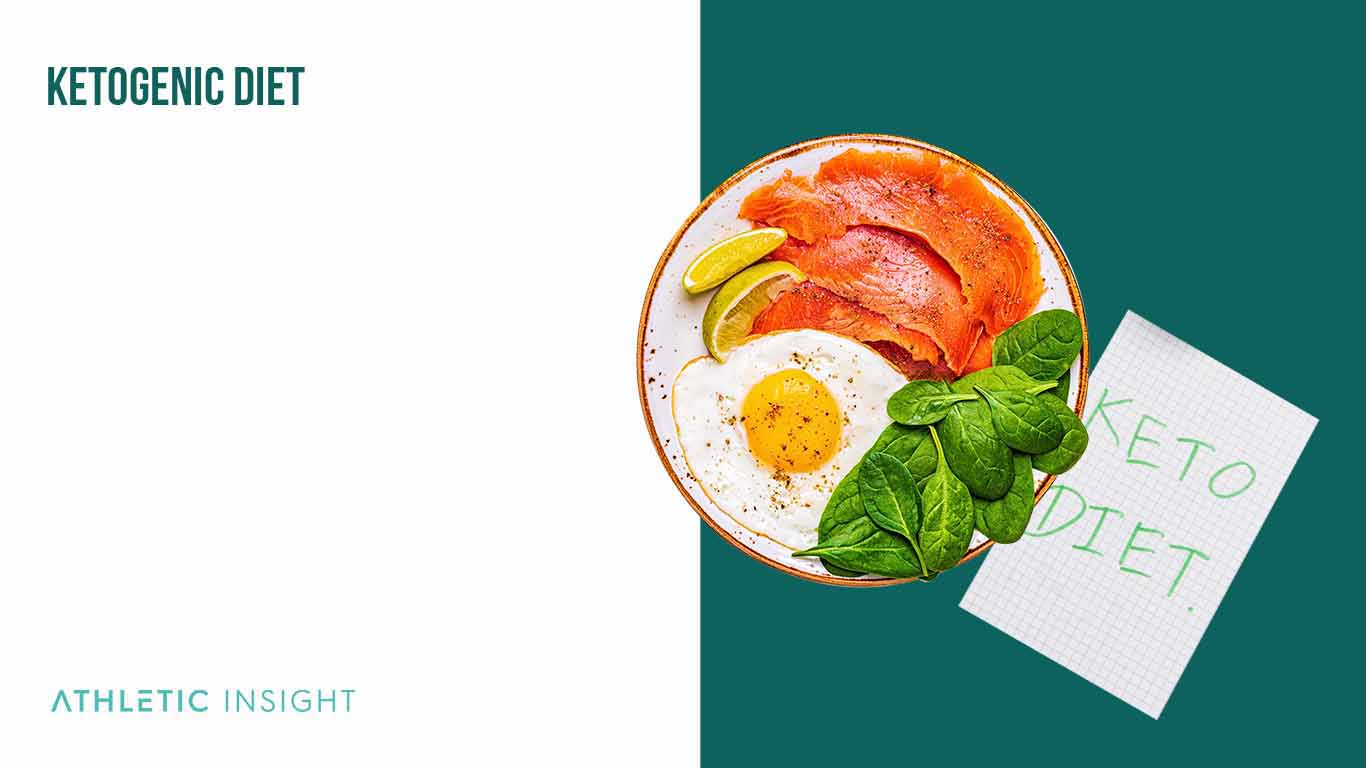
Ketosis occurs when there is a dramatic loss of carbohydrate intake and begins sourcing for energy in body fat. The mechanism of the Ketogenic diet induces burning fat to compensate for the need for energy, resulting in weight loss. The idea of consuming meals that are high in meat and fat is increasingly more satisfying, resulting in reduced hunger.
Different versions of the ketogenic diet exist, but the most common practice is its Standard Ketogenic Diet, which follows a 70% fat, 20% protein, and 10% carb rule in meal consumption. Limiting the consumption of around 50 grams of carbohydrates per day induces ketosis in the body. One can identify its effects when one experiences less hunger, increased thirst, and eventually loss of weight when regularly done.
10. Ornish Diet
The Ornish Diet is a low-fat, elimination diet that balances fat, carbohydrates, and protein and is complemented by regular exercise. Dr. Dean Ornish, a professor at the University of California, formulated the diet in 1977 to improve humans’ overall health. The diet requires a plant-based and low-fat meal that eventually results in weight loss and claims to alleviate chronic health conditions such as heart diseases and diabetes.
The Ornish Diet is particularly beneficial for people who want to slow aging. It claims to reverse aging through cellular repair and renewal gradually. There are no restrictions on the number of calories or nutrients that one should be able to partake in daily. Food that cannot be eaten in an Ornish Diet includes fish, poultry, and meat.
High-fat foods like vegetable oil, nuts, certain seeds, and caffeine should be taken moderately. The majority of the fat sources in the data should come from whole foods like grains and legumes. Besides the diet itself, the Ornish Diet requires at least 30 minutes of regular exercise.
11. Jenny Craig Diet
The Jenny Craig Diet is a balanced diet that supports weight loss efforts through its client’s custom-fitted diet. The diet program delivers meal-prepped food according to the individual’s caloric and nutritional needs. Its meals can range between 200 and 300 calories each and can sum up to 2,300 calories per day. These would vary depending on the client’s current weight and nutritional needs.
People get the convenience of having the required food they should eat delivered to their doorsteps. Besides a meal plan, the Jenny Craig Diet Program also provides coaching services by trained health experts for personal consultations at least once weekly.
The Jenny Craig Diet Program ensures that their calorie-restricted diets are consulted by certified dieticians and do not contain any form of artificial condiments and high sodium ingredients. When one reaches half their ideal weight, they are encouraged to begin preparing their meals with the guidance of an official Jenny Craig coach.
12. Asian Diet
The Asian Diet is a balanced diet composed of plant-based foods with minimal amounts of meat and dairy products. Sources of the daily needed protein and minerals are sourced in vegetables. This specific diet is intended for healthy adults who want a balanced diet to prevent chronic diseases.
Vegetables and fruits typically can supply the body’s daily nutritional needs when accounted for properly. It does not particularly instruct servings and caloric limits, but there are recommended food groups that should be consumed daily, weekly, or monthly.
An Asian diet consists of vegetables, fruits, grains, legumes, and nuts. A significant difference in the Asian diet from the Western diet is the use of vegetable oils instead of butter and margarine.
13. Fertility Diet
The Fertility Diet is a low-carb diet specially made for women to increase their chances of pregnancy and enhance fertility in men. This diet was based on a study by researchers in 2007 regarding a pattern that increases fertility. Duly following the diet reduces 66% of the risk for ovulatory infertility and 27% from other causes.
Essential vitamins and minerals like folic acid and iron are part of the nutritional value that is included in the diet. The Fertility Diet ensures that both men and women are in their best health with each one’s own BMI and individual nutrition. The diet consists of eating vegetable-sourced protein as opposed to animal protein.
High fiber, high-fat dairy, and low glycaemic index carbohydrates are recommended for the fertility diet. Multivitamins and minerals should be sourced from vegetable products. Monounsaturated fats are also ideal that can be found in nuts, avocados, and olive oil.
People on the Fertility diet should avoid caffeine, alcoholic beverages, and any high sugar content foods and drinks generally considered to suppress fertility.
14. Peter Attia Diet
The Peter Attia Diet centers around enhancing longevity and optimizing health through a targeted approach to nutrition and lifestyle. It advocates for a low carbohydrate intake to manage insulin levels, promoting metabolic flexibility and potentially reducing the risk of metabolic diseases. This diet includes high levels of fats and moderate protein, prioritizing nutrient-dense, minimally processed foods.
Strategic interventions such as periodic fasting and time-restricted eating are key components, believed to promote autophagy and cellular repair. The Peter Atiia diet incorporates refeeds with higher carbohydrate intake tailored to individual metabolic responses, aiding in metabolic adaptability and overall dietary balance.
The benefits of the Peter Attia Diet are multifaceted, focusing on both extending lifespan and improving the quality of life during those years. By addressing dietary triggers of chronic inflammation and disease, the diet aims to reduce the incidence of major chronic diseases like heart disease, Alzheimer’s, and type 2 diabetes.
The diet also integrates physical activity and stress management strategies, enhancing overall physical, mental, and emotional health, thus supporting a comprehensive approach to longevity and well-being.
15. Nutritarian Diet
The Nutritarian Diet is a balanced, elimination diet that promotes healthy eating by choosing food with a high nutrient value that benefits the body. One should opt for whole foods that are sustainably produced. The Nutritarian diet encourages a plant-based diet but does not restrict animal meat and meat products, only minimizing one’s everyday consumption.
The Nutritarian Diet philosophy believes that eating G-BOMBS (Greens, Beans, Onions, Mushrooms, and Berries) as part of the diet improves overall health and is highly anti-cancer. A Nutritarian diet is low in fat & sodium, gluten, and processed free food.
Snacking should be avoided while practicing the diet, and multivitamins are highly recommended to avoid vitamin and mineral deficiencies. Eating the suggested nutrient-dense food leads to weight loss, prevents chronic diseases, and impedes aging.
16. South Beach Diet
The South Beach Diet is an elimination diet that combines a low-carb, high-protein diet to achieve weight loss and revamp one’s lifestyle. It doesn’t follow a strict low-carbohydrate diet but encourages good sourcing of carbs in whole grains, fruits, and vegetables. These carbohydrate sources are low in the glycaemic index and rich in fiber essential to the body.
Fat sources should include and prefer those with monounsaturated fats, such as olive oil and canola oil, over saturated fats. Lean meat is allowed in a South Beach Diet but should be consumed in smaller portions.
Not all vegetables are freely eaten on this diet, as starchy vegetables should be consumed minimally. Foods with high sugar content are limited to 100 calories a day.
17. Macrobiotic Diet
Macrobiotic Diet is a low-fat, elimination diet that encourages eating meals with sufficient fiber, complex carbs, and low-fat content. Food that is overly processed and high in salt and sugar is discouraged. The diet was created to maintain a sustainable habit of eating while promoting a healthier lifestyle.
The diet’s philosophy tries eliminating highly processed food containing too many preservatives. Taking nutritional supplements is also discouraged in the Macrobiotic Diet. A typical Macrobiotic Diet should include whole grains, vegetables, seaweed, and pulses such as chickpeas, lentils, and tempeh.
Overly processed foods such as dairy products, artificial sweeteners, and genetically modified foods are discouraged. The groups of food to be generally avoided in the Macrobiotic Diet are dairy products and animal protein.
18. Alkaline Diet
An alkaline diet is a balanced, elimination diet that promises to reduce one’s weight and prevent chronic illnesses. The Diet revolves around the philosophy that highly processed food and meat contain a substantial amount of acid that should be avoided. Going for a more alkaline set of foods claims to keep the body in a healthy homeostatic condition, preventing illnesses.
Food that can be eaten is alkaline, like most vegetables, seasonal fruits, nuts, and certain spices such as garlic, ginger, and onion. Food not allowed on an alkaline diet contains high amounts of preservatives and is processed. Animal meat, dairy products, and most grains are also discouraged in the diet.
19. Raw Food Diet
The Raw Food Diet is a low-calorie, elimination diet done by eating unprocessed food and is generally prepared without cooking. The diet claims to improve a person’s overall health when the food they eat is unmodified. Food that undergoes pasteurization, refinement, and contains preservatives is highly discouraged in the meal habits of the Raw Food Diet.
The Raw Food Diet encourages preparing food at a certain heat and adding preservatives keeps the nutrients intact. The diet allows the eating of raw animal products but in minimal portions. One can eat vegetables, fruits, nuts, and organically grown seeds without pesticides. The food groups mentioned should comprise 75% of one’s Raw Food Diet. Other than refined and processed food, alcohol and coffee are highly discouraged.
20. Atkins Diet
The Atkins Diet is a low-carb, elimination diet that aims to encourage people who go through the diet to alter their eating habits and sustain them for a longer time. The Atkins Diet achieves weight loss through eating balanced amounts of protein, carbohydrates, and fats.
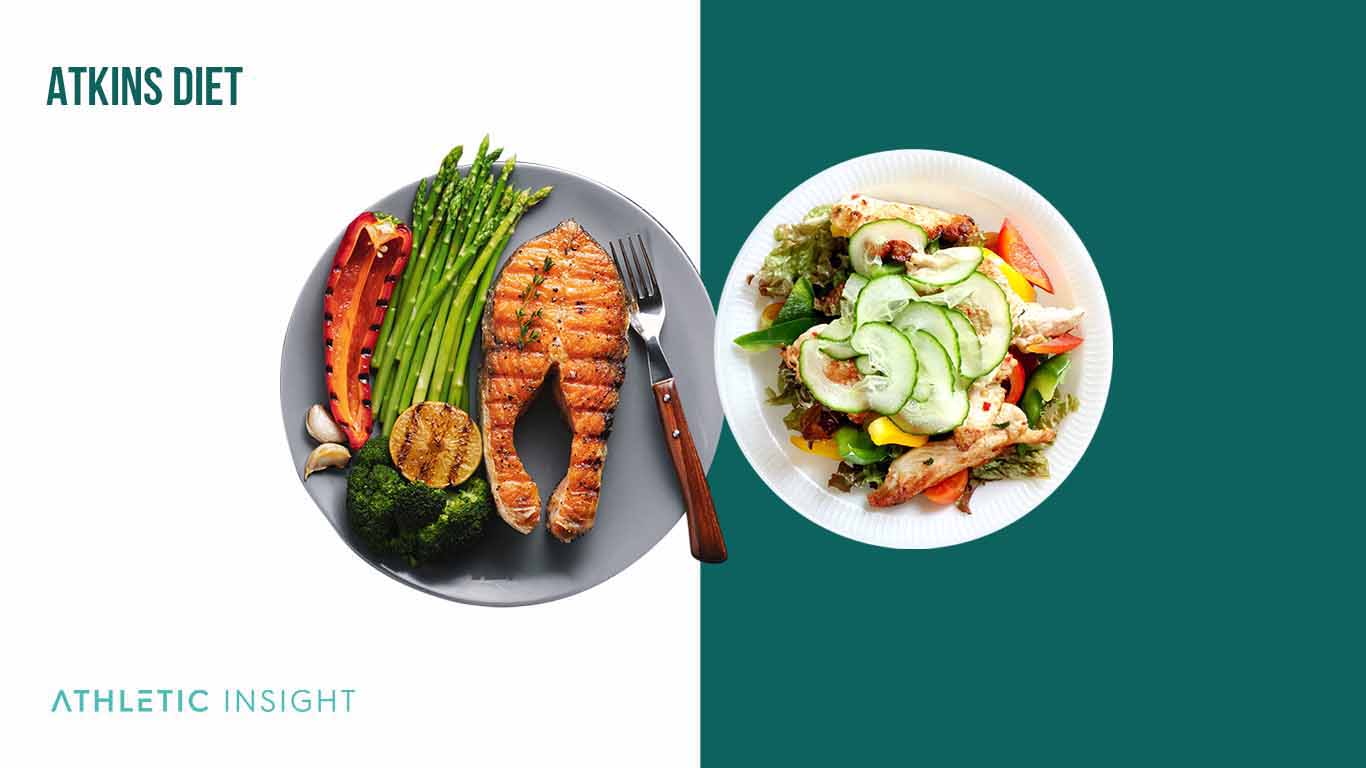
Its philosophy is that chronic and diet-induced diseases are triggered by low fat and high carbohydrate diet. This diet compensates for that. The Atkins diet goes through a 4-phase plan wherein specific amounts of carbs and vegetables are gradually added and adjusted into the diet.
Specific foods encouraged in the diet include dairy products, animal meat, nuts, seeds, and a healthy source of plant-based fat. People who want to undergo the Atkins Diet should avoid those high in sugar, grains, starchy foods, legumes, low-fat, and vegetables with high carb content.
How to Choose the Best Diet?
The number of available diet plans makes it confusing and daunting at the same time. A general rule when getting into a diet program is first knowing one’s purpose. One might want to lose weight, improve eating habits, alleviate medical conditions, or improve overall health. Listed below are the ways to choose the best diet plans.
- It is recommended to pick out a diet plan that isn’t too restrictive to the extent that it leaves one hungry. The repetitive feeling of hunger affects a person’s emotional and mental state resulting in relapsing and eventually overeating. Take in foods rich in fiber and high water, like vegetables and fruits.
- Some diet plans encourage complementing it with regular exercise. One should gradually adjust to a more active lifestyle to not overwhelm a person with the recent changes in routine. Physical activities that are more enjoyable are encouraged when starting.
- Specificity of the food requirements in each diet costs someone’s money, time and effort. Readjusting to a different lifestyle according to the diet can be done, but not for everyone. Diet plans are low in cost and easy to prepare for people who do not have the luxury of time.
- The food one eats on certain diet plans can drastically change the body. People with medical or underlying conditions may not be suitable for a diet. It is still best to consult nutritionists and experts when one wants to go into a diet plan.
- One factor that should be considered when choosing the best diet plan is sustainability. Evaluate the diet plan if it is attainable and can go along with one’s lifestyle. A consequence of this factor could lead to gaining back weight.
What is the Best Diet Plan for Elderly People?
The best diet plans for elderly people should include simple, protein-rich, low in calories, balanced, and alleviating chronic health conditions. The elderly can no longer do chores such as making meal preps daily. Diet plans that are made simple should accustom a person’s limited physical activities, such as the elderly.
The high protein content is also essential to prevent aging health problems such as osteoporosis and a decrease in immune response. The decreased physical activity and increased food and calorie consumption could lead to overweight and obesity for older adults.
The best diet plans for elderly people are the ones that keep them healthy and strong. One should go for an appropriate amount of calorie content in a day. These specific diet criteria fit into a Mediterranean, DASH, Mayo Clinic and ProLon Diet that fulfills the nutritional needs of older people while making them as simple as possible.
What is the Best Diet Plan for Men?
The best diet plan for men combines balanced nutrition, sustainability, adaptability, practicality, and simplicity. Men usually have the least amount of patience and skills in preparing food. The best diet plan for men must be simple and adaptable to blend through men’s lifestyles easily.
Men have a more significant physical structure than women and require a balanced diet of protein, carbohydrates, healthy fat, and whole grains. A sustainable diet will help men stick with the habit of the guidelines in a diet plan for a longer time. The above-mentioned criteria qualify for the Mediterranean, Paleo, and DASH Diet, emphasizing nutrition and sustainability.
What is the Best Diet Plan for Women?
A diet plan for women should fit the criteria including sustainable, nutrition-based, safe, flexible and easy. Women, specifically mothers who want to go into diet plans, commonly have limited time to prepare food. The best diet plan for women should be flexible and easy to prepare.
As women grow older, they succumb to hormonal and physical changes that should be paired with food that can fill the nutritional gap. Some diet plans that can be drastic to women’s bodies should opt for diet programs that do not pose risks detrimental to their health. Diet plans between DASH Diet, Mediterranean, and Noom Diet are perfect choices for women.
These specific diets consider the balance between nutrition and convenience that fits nicely into a woman’s lifestyle.
What is the Best Diet Plan for Athletes?
The best diet plan for athletes follows a criterion of simplicity, nutrition-based, effectiveness, safety, and energizing. Different athletes have nutritional requirements in food that must be fulfilled to perform optimum results and effectiveness. Early morning training would require easy-to-prepare diet plans that one can do daily.
Fact-based results of established diets should be imposed on athletes to safeguard their health from injuries and physical stress. An athlete’s daily energy requirements are very demanding, and an appropriate diet program is essential to sustain and replenish that energy level.
The best diet plan for athletes is the Mediterranean, Paleo, and DASH Diet. The three diet plans can help athletes sustain their energy and nutrition in physically demanding situations.
What is the Best Diet Plan for CrossFit?
The best diet plans for people who do CrossFit are those that energize the body, are nutrition-based, are not too restrictive, high in protein, and adaptable. CrossFit’s exercise requires energy to sustain the entire program, and consuming food that can fuel those needs is essential.
The best diet plan for people doing CrossFits can replenish depleted vitamins and minerals when excessive activity is done. Most people undergoing the CrossFit program track their macros and consider a high protein diet that can build muscles.
Doing the exercise is exhausting enough, and pairing it with an adaptable and not too restrictive diet increases one’s adaptability. CrossFit Program goes well with Paleo, DASH, and Flexitarian Diet. These diets allow versatility and fulfill the nutritional needs of people in CrossFit Programs
What is the Best Diet Plan for Weight Loss?
The best diet plan for weight loss should be safe, sustainable, effective, appropriate, and helps reduce the risk of illnesses. Most diet plans are designed for weight loss, but some are too drastic, resulting in an unhealthy way of losing weight.
Balanced nutrition and gradual weight loss are ideal for the best diet plan for weight loss. There should be proven facts that these diet plans are effective at losing weight or the efforts, time and money invested will all be wasted. People have different purposes in losing weight; some undergo a specific diet to reduce their risk for obesity and chronic diseases.
Sustainability is a fundamental criterion for weight loss to keep the weight off for a long time or permanently. The best diet plan that fits the following criteria for weight loss is the Flexitarian Diet, Volumetric Diet, and the Jenny Craig Diet. The mentioned diets all impose safe and sustainable diets achievable for weight loss.
What is the Best Diet Plan for Health?
The best diet plan for good health should be nutrition-sufficient, prevent diseases, not restrictive, safe, and clinically proven effective. No matter the purpose of diet plans, they should never fall short on nutrition and can still provide a well-balanced diet.
Food content in meal preparations is recommended to have potent ingredients that can fight diseases and promote sound health. Restrictive diet plans usually result in gaps in the required nutrition and energy that the body needs. The best diet plan for health improves an individual’s health and must be proven clinically safe and effective and have facts that can back up its claims.
Some diet plans are intended for weight loss, promoting heart health, and reducing the risks of serious illnesses contributing to a person’s well-being. Top diet plans to improve health include the Mediterranean, DASH, and Flexitarian Diet. These diets promote health improvement, are not too restrictive, and are proven clinically safe.
What are the best Diet Types?
The best diet types vary based on the physical needs of an individual. A person who may want to increase their muscle mass should go for a protein-rich diet. Those wanting to lose weight are advised to decrease their carbs and calorie intake.
Diets are subjective to each individual, and looking into various purposes is essential to get the desired results. Listed below are the types of diets that one typically falls within.
- Low Fat Diets
- Low Carb Diets
- Low-Calorie Diets
- High-Protein Diets
- Balanced Diets
1. Low Fat Diets
The best low-fat diet is the Macrobiotic Diet. This low-fat diet promotes a healthy way of eating that helps prevent chronic diseases such as diabetes and cardiovascular diseases. The Macrobiotic Diet is designed to contain less fat in the overall diet plan and promotes positive results for health. Artificially made food and animal products should be avoided in a low-fat diet.
A macrobiotic diet has an average daily calorie intake of 2,126, comprising 68% of total carbohydrates, 15% protein, and 17% fat. It typically contains nutrients rich in B-12, vitamin D, 859 mg of Calcium, 3,666 mg of Potassium, and 2,560 mg. of sodium. Other top low-fat diets include Ornish Diet and TLC Diet.
2. Low Carb Diets
The Atkins Diet is considered the best low-carbohydrate diet intentionally designed to create a low-carb diet. The mechanism of limiting and gradually increasing carbohydrate intake is part of the diet plan to burn fat. Food with high levels of sugar and alcohol is restricted to a low-carb diet. An Atkins Diet typically contains 15 grams of carbohydrates daily.
The Atkins Diet has an average daily calorie of 1,527, comprising just 55% of total carbohydrates, 18% protein, and 27% fat. This low carb diet usually contains nutrients like vitamin B-12, vitamin D, 1060 mg of Calcium, 3,274 mg of Potassium, and 1,827 mg. of sodium. One should also try other low-carb diets such as the Fertility and Ketogenic Diet.
3. Low-Calorie Diets
Noom’s diet plan is the best low-calorie diet plan. Its Healthy weight program based its diet plan on the caloric density of the prepared meals. These are calculated by professionals tailored to the needs of the individual who undergoes the Noom Diet Plan. Noom’s Healthy Weight Program contains 15 grams of carbohydrates daily. Noom’s diet has an average daily calorie count between 1,200 for females and 1,400 for males.
There are no restrictions on a low-calorie diet, but the nutrient value would depend on the food that the individual partakes in. The green-colored food in groups usually has the lowest calories but the highest nutrient value. Another must-try low-calorie diet includes the Raw Food Diet.
4. High-Protein Diets
The Paleo Diet is the best source of a high-protein diet. The diet contains between 10 to 35% protein content as one’s daily source of calories. A high protein diet helps reduce the feeling of hunger for more extended periods and can help build muscles. One should eat large amounts of meat, seafood, fruits, and vegetables and avoid grains, legumes, sugar, and dairy products.
The Paleo Diet has an average daily calorie of 2,200, comprising 23% total carbohydrates, 38% protein, and 7% saturated fat. The high-protein diet includes nutrients such as vitamin B-12, 691 mg of Calcium, 9,062 mg of Potassium, and 726 mg. of sodium. Other diets that are high in protein include the Modified Ketogenic Diet.
5. Balanced Diets
An Alkaline Diet is considered the best-balanced diet. A balanced diet is believed to have the perfect components in food to create a homeostatic balance through eating alkaline food. Alkaline food is sourced from raw vegetables & fruits, legumes, soy products, and seeds. People on an alkaline diet should avoid animal meat, processed food, caffeine, and eggs, which are believed to be acidic.
An Alkaline Diet has an average daily calorie intake of 1,344, comprising 61% total carbohydrates, 17% protein, and 6% saturated fat. It typically contains nutrients rich in B-12, vitamin D, 400 mg of Calcium, 2,068 mg of Potassium, and 1,440 mg. of sodium. One can try other balanced diets: the Asian Diet, DASH Diet, and Flexitarian Diet.
What are the best diet preferences?
Diet Preference goes on to the requirements of an individual. Preferences would include their health needs, religious affiliation, and their values. Some diet programs were initially utilized as a medical approach to prevent or cure specific diseases. The diet plan adjusts to accommodate the unique health goals and restrictions. Listed below are the best diet preferences.
1. Best Diets for Diabetes
The Mediterranean Diet is considered the best diet for diabetes. This diet promotes weight loss and a balanced diet that supplies adequate nutrition for someone with diabetes. The food pyramid for the Mediterranean diet highly suggests eating many vegetables and fruits and using olive oil as a source of good fat. There are limitations when it comes to eating red meat, seafood, and wine that are all recommended to be consumed moderately.
The Mediterranean Diet has an average daily calorie count of 1,527, with 50% total carbohydrates, 18% protein, and 5% saturated fat. The best diets for diabetes include nutrients such as vitamin B-12, 32 g of fiber, 418 mg of Calcium, 3,351 mg of Potassium, and 1,368 mg of sodium. Ranked second and third best diets for Diabetes are the Flexitarian Diet, and the Mayo Clinic Diet
2. Halal Food Diet Plan
An Alkaline Diet is the best Halal Food Diet Plan that one should follow. Plant-based food is highly encouraged for an alkaline diet which is presumed to be free from harmful food components found in processed meats. It is safer and employs a balanced diet that aligns with a Halal Food Diet Plan.
People on an alkaline diet can eat raw vegetables, fruits, legumes, soy products, seeds, and nuts. Animal meat, eggs, caffeine, and highly processed foods are discouraged.
The Alkaline Diet has an average daily calorie consumption of 1,344, with 61% total carbohydrates, 17% protein, and 6% saturated fat. It typically includes nutrients rich in B-12, vitamin D, 400 mg of Calcium, 2,068 mg of Potassium, and 1,440 mg. of sodium. Other diet plans that follow a Halal custom of eating are the Asian and DASH Diet.
3. Easy to Follow Diets
The Mediterranean Diet is the easiest diet to follow. Conforming to a Mediterranean diet is easy because it is not too restrictive and results in a broader set of ingredients and recipes. This balanced diet copies the Mediterranean eating habits that mainly comprise fruits and vegetables that are considered an easy-to-follow diet. Seafood, red meat, and wine are moderately consumed; olives are a source of good fat.
The Mediterranean Diet has an average daily calorie count of 1,527, comprising 50% total carbohydrates, 18% protein, and 5% saturated fat. The diet includes nutrients such as vitamin B-12, 32 g of Fiber, 418 mg of Calcium, 3,351 mg of Potassium, and 1,368 mg. of sodium. One could also follow the Flexitarian and Fertility Diet for a simple and easy diet regimen.
4. Low Salt Diet Plans
The Asian Diet is the Best Low Salt Diet Plan to Follow. A low-salt meal is well-observed in an Asian Diet that falls within the daily recommended salt intake of 967 mg. It is a balanced diet of vitamins, minerals, and protein from vegetables, fruits, and seafood. Processed food containing high amounts of salt is avoided in the Asian Diet.
The Asian Diet follows a low salt diet plan and averages a daily calorie consumption of 1,588, with 85% total carbohydrates, 9% protein, and 6% saturated fat. It typically includes nutrients rich in B-12, vitamin D, 31 grams of fiber, 717 mg of Calcium, 3,934 mg of Potassium, and 967 mg. of sodium. Other Low Sodium Diet Plans include the Alkaline Diet and DASH Diet.
5. Plant-based Diets
The Mediterranean Diet is considered the best Plant-based Diet. It follows its food pyramid that suggests a certain amount of food groups that should be consumed. Plant-based diets take up the most considerable portion of the diet. It encourages eating fruits and vegetables as the primary source of protein, vitamins, and minerals that the body needs. Seafood and red meat are allowed but should be taken in minimal portions.
The Mediterranean Diet has a daily calorie of 1,527, comprising 50% total carbohydrates, 18% protein, and 5% saturated fat. The diet includes nutrients such as vitamin B-12, 32 g of fiber, 418 mg of Calcium, 3,351 mg of Potassium, and 1,368 mg. of sodium. Other high-content, plant-based diets include the vegetarian diet, pescetarian diet and the flexitarian diet.
6. Best Diets for Heart Disease
The Ornish is the best diet for Heart Diseases. It intentionally creates a low-fat diet that prevents exacerbating and resolves certain heart-related illnesses. The best diet for heart disease should be rich in fiber and nutrients from fruits, vegetables, legumes, and whole grains. There are no restrictions, but highly processed food, animal meat, and alcohol are advised to be consumed moderately in the diet.
The Ornish Diet has a daily calorie of 1,875, comprising 70% total carbohydrates, 20% Protein, and 10% fat. The diet includes nutrients such as vitamin B-12, 56 g of fiber, 1026 mg of Calcium, 4,703 mg of Potassium, and 2,232 mg. of sodium. Other Heart-healthy Diets include the Mediterranean Diet and DASH Diet.



